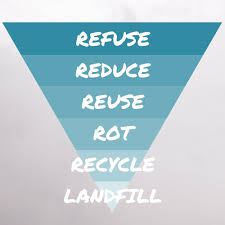We have previously made a few suggestions for easy places in the average life to save some carbon; essential first steps to control the predicted future climate change. Here, we continue into the two biggest sources of emissions, Agriculture and Energy.
Agriculture is our biggest slice of the emissions pie. Emissions from this sector are split into enteric fermentation (digestion from animals; the burps and farts), agricultural soils (some soil management practises (tilling) but mostly nitrous oxide emissions from soils; animals #1s and fertiliser), manure management (nitrous oxide emissions from manure spread as fertiliser or deposited directly), urea application (application of synthetic fertiliser) and liming (application of lime and dolomite).  Source: GHG Emissions Inventory 1990-2015. Note that there is no rice cultivation in NZ (it is a good source of methane emissions where it does occur), and that emissions from other carbon containing fertiliser is not estimated.
Source: GHG Emissions Inventory 1990-2015. Note that there is no rice cultivation in NZ (it is a good source of methane emissions where it does occur), and that emissions from other carbon containing fertiliser is not estimated.
As you can plainly see, enteric fermentation, the farts and burps, make up the biggest portion of our agricultural emissions. There are some technologies beginning to become known that can reduce these emissions, but they aren’t applicable to you to do today (and yet we will explore those in a future T3aser), but for the most part this is a natural process that is part of being a ruminant. There are many experts world-wide calling for a reduction of meat consumption for the sake of the planet. The McCartneys (yes, Sir Paul and daughters) launched a campaign in 2009 called Meat Free Mondays which is both catchy, and on the face of it quite simple. You don’t even have to be strict about keeping to a Monday for meat free. Amongst the many compelling reasons to reduce meat intake that they list are cost savings as many vegetarian staples are less expensive than meat. The library has recently put the spotlight on vegetarianism month, and they have a multitude of recipe books which you can borrow to try new things.
Finally, let’s tackle energy. According to the Ministry for Business, Innovation and Employment the majority of our energy sector greenhouse gases come from liquid fuels, and the majority (45%) of those are from transportation. That seems to me to be as good a place as any to start. Like many smaller towns in New Zealand there are few options that are not private vehicles to commute to and from work, to school, to play etc. But from the first Monday of this month there IS a bus service on trial in Thames and the usage during the trial will determine whether or not we get to keep it long term. The council is also pretty willing to hear about what tweaks and adjustments might make the bus more appealing. But it really is use it, or lose it. Let us be clear that this is not an emissions free journey, but sharing transport options reduces the emissions from an individual journey (there is also a lot of social good to be had). You can download the timetable here.
Other ways to reduce transport emissions are to car pool, or to replace a car journey with something else (bicycle or walking). If you are technologically savvy there are apps that you can get for ride sharing, the prominant being Localift. To have any real benefit on that however, you do need to have friends or neighbours also using the app; it can’t connect people who are strangers. The traditional approach of talking to people in your proximity may work best here.
Summer is coming, which certainly makes cycling and walking more attractive! The key here is to make sure that the journey is replacing a car journey, and the good news is that shorter car journeys are less efficient so hopping on your bike to nip out for bread and milk is valuable.
Today:
- Have one less meat based meal each week.
- Replace a car journey with walking or cycling, or car pool.
- Use the bus.
Naturally, there are many other good tips out on the web. What’s yours? Do you have a favourite vegetarian recipe? Have you succesfully car pooled? Use the comments to share!
Feature image photo credit: Michelle Spomer, Flickr.com
 uite fortunate in that we have ways to refuse what in some places is unavoidable waste, specifically packaging. At Bin Inn, for example, you can take your own container and fill it up with whatever you want. Make sure you weigh it on arrival to avoid paying for the weight of the container! You’ll have noticed a shift towards paper bags if you’ve been in recently too. You can also take this unnecessary refusal to the IXL Butchery where you can have your meat weighed into your own containers.
uite fortunate in that we have ways to refuse what in some places is unavoidable waste, specifically packaging. At Bin Inn, for example, you can take your own container and fill it up with whatever you want. Make sure you weigh it on arrival to avoid paying for the weight of the container! You’ll have noticed a shift towards paper bags if you’ve been in recently too. You can also take this unnecessary refusal to the IXL Butchery where you can have your meat weighed into your own containers.